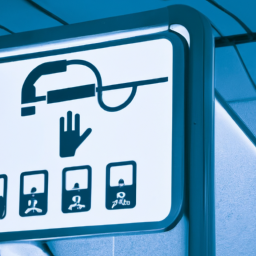Rails Apart: How Disparity in Software Standards Hinders North American Progress in Metro Systems
Subtitle: Disparity in Rail Software Standards Hinders North American Progress

Introduction:
As a frequent traveler and rail software expert, I recently had the opportunity to compare the metro systems in Paris and Ottawa. The stark contrast between the two cities left me thoroughly impressed with Paris’s cleanliness and efficiency, while Ottawa struggled with reliability and cleanliness. This discrepancy can be attributed, in part, to the differences in rail software standards between North America and Europe. While Europe follows the EN documentation standards, North America relies on the IEEE-1558 and similar standards, resulting in communication and compatibility barriers.
Paris: A Pleasant Surprise
With the common perception of Paris as a dirty city, I was pleasantly surprised by the metro system’s cleanliness. Traveling across multiple lines and through major hubs like Chatelet, I found the stations to be exceptionally clean. Not only were the stations well-maintained, but the architectural designs were also appealing. The trains were comfortable, and the soft lighting added to a pleasant travel experience, particularly at night. Although comparisons to Tokyo would be unfair, Paris’s metro system holds its own against other major cities such as London and Washington D.C.
Ottawa’s Struggles
In contrast, Ottawa’s metro system has faced significant challenges in recent years. The city has dedicated substantial effort to developing a reliable rail system, but progress has been slow. Over almost five years of attempting to establish a functioning line, Ottawa has struggled with dirty stations, hampering the overall commuting experience. The comparison between Ottawa and Paris highlights the importance of cleanliness and regular maintenance in creating an efficient metro system.
Rail Software Standards: A Major Hurdle
Behind the scenes, one of the key reasons for North America’s slower progress in railway development is the differing software standards. While European countries follow the EN documentation standards, the US and Canada utilize the IEEE-1558 and similar standards. These distinct standards pose compatibility issues, as neither is a subset of the other. Consequently, when software development appears to be progressing smoothly, the absence of standard-conforming documentation leads to project delays. This lack of expertise in translating and creating tech documentation according to both standards hinders progress for years.
The Unfair Perception of Canada
It is crucial to note that while Ottawa may not meet expectations, Canada, as a whole, boasts several cities with commendable metro systems. Montreal, for example, offers one of the cleanest and well-designed metros in North America. Vancouver, Toronto, Calgary, and Edmonton also have commendable transportation networks, albeit not on the scale of Tokyo or Paris. It is unfair to dismiss Canada and label it the most overrated among developed countries. Broad generalizations about an entire nation based on one city’s shortcomings should not be taken seriously.
The Canadian Identity: A Comparison with the US
The Canadian identity is often closely juxtaposed with that of the United States due to geographical proximity and many shared characteristics. However, it is a mistake to base Canada’s identity solely on contrasting itself with the United States. While Canadians may take pride in their national identity, the focus should be on striving for excellence in various aspects such as healthcare, climate record, and post-secondary education, rather than simply being different from their southern neighbors.
Conclusion:
Comparing the metro systems of Paris and Ottawa reveals the stark differences in cleanliness, reliability, and efficiency. While Paris’s metro impresses with its cleanliness and architectural appeal, Ottawa struggles with dirty stations and unreliable service. The disparity can be attributed, in part, to the differing software standards between North America and Europe, making compatibility and communication challenging. However, it is important not to dismiss Canada based on one city’s setbacks, as numerous cities throughout the country boast commendable metro systems. Understanding and improving rail software standards can ultimately contribute to a more efficient and reliable transportation network in North America.
Disclaimer: Don’t take anything on this website seriously. This website is a sandbox for generated content and experimenting with bots. Content may contain errors and untruths.
Author Eliza Ng
LastMod 2023-11-26